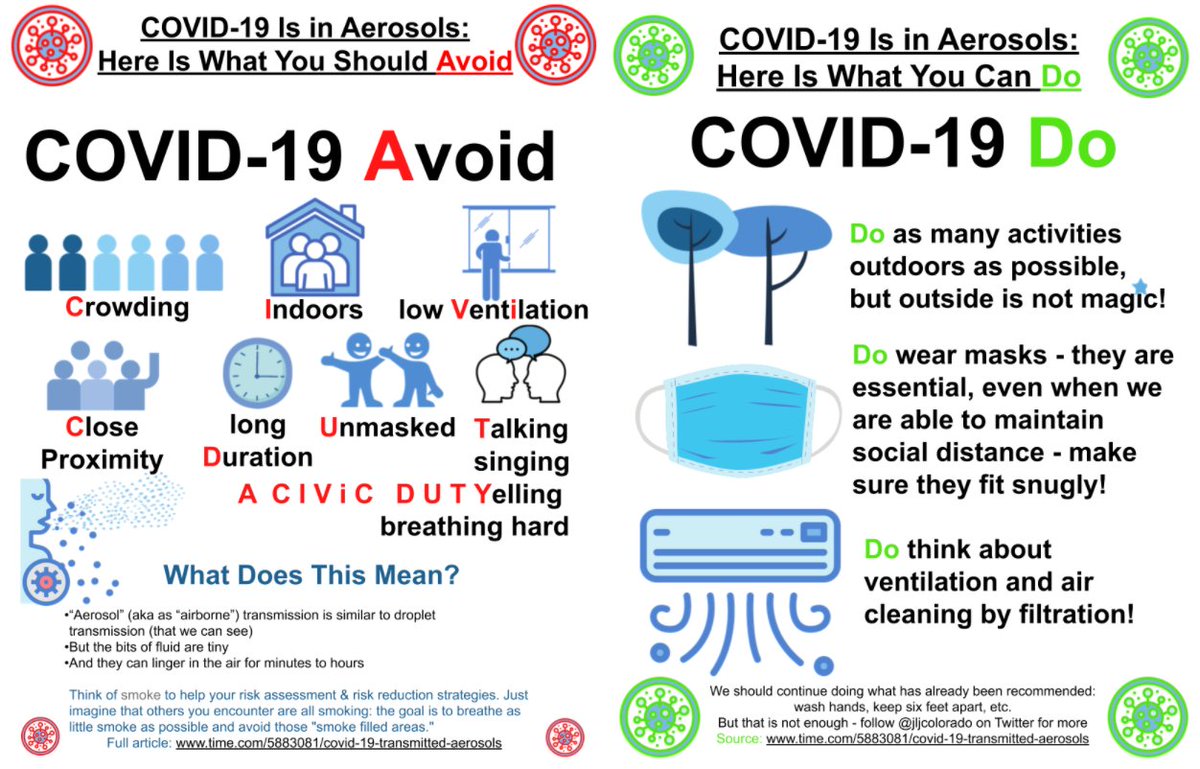
1/ @WHO ADMITS AEROSOL TRANSMISSION IS IMPORTANT (without actually saying it)
This press conference from @mvankerkhove is very useful and maddening at the same time.
She describes measures that ONLY work to control aerosols.
This press conference from @mvankerkhove is very useful and maddening at the same time.
She describes measures that ONLY work to control aerosols.
2/ Yet aerosols / airborne ***are not mentioned at all***. It is left mysterious why all those measures work.
Guess what? That is very confusing to people, and then people can't protect themselves well. They don't know how to adapt the recommendations to their situation.
Guess what? That is very confusing to people, and then people can't protect themselves well. They don't know how to adapt the recommendations to their situation.
3/ Hear what @c_drosten , Germany's leading virologist and a key advisor to Angela Merkel, had to say about this. Perhaps a reason why Germany is doing better than a lot of other countries?
https://twitter.com/jljcolorado/status/1306968222059520000
4/ @WHO, time to retract 28-March tweet that "airborne is misinformation":
And clearly state that what happens in the enclosed, crowded, talking, poorly ventilated spaces that @mvankerkhove is telling us to avoid is *aerosol/airborne transmission*
https://twitter.com/WHO/status/1243972193169616898
And clearly state that what happens in the enclosed, crowded, talking, poorly ventilated spaces that @mvankerkhove is telling us to avoid is *aerosol/airborne transmission*
5/ And to clearly state that transmission in close proximity is dominated by aerosols, as science has clearly shown (sciencedirect.com/science/articl…).
And that if superspreading events are due to aerosols, and so is close contact transmission, we need to focus on fighting that "smoke"
And that if superspreading events are due to aerosols, and so is close contact transmission, we need to focus on fighting that "smoke"
6/ And to dispel the 1910 error from Chapin (archive.org/details/source…) that transmission in close proximity is proof of ballistic droplet transmission.
Chapin said that the end (getting people to avoid contact infection) justified the means (denying airborne trans. w/o evidence)
Chapin said that the end (getting people to avoid contact infection) justified the means (denying airborne trans. w/o evidence)
7/ @gabbystern, please clean up @WHO's message urgently. People are getting sick and dying, losing jobs and livelihoods. That is much worse than any fear that admitting airborne transmission may bring
Especially if we explain run-of-the-mill (vs. Hollywood) airborne transmission
Especially if we explain run-of-the-mill (vs. Hollywood) airborne transmission
• • •
Missing some Tweet in this thread? You can try to
force a refresh







